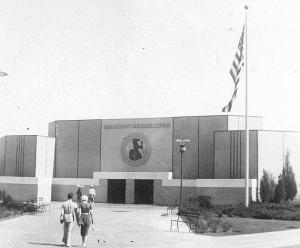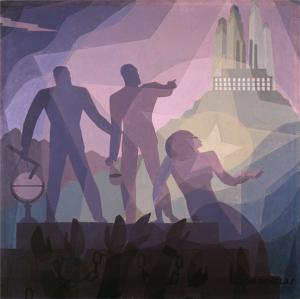Rising: The Hall of Negro Life A Documentary Film Uncovers Largely Unknown Story About Civil Rights Exhibition At 1936 World’s Fair In Dallas
DALLAS, TEXAS, UNITED STATES, June 13, 2022 /EINPresswire.com/ -- In the heart of Dallas in 1936, a collection of local visionary leaders in the Black community – amid formidable opposition of the Jim Crow South – conceived, erected and curated the Hall of Negro Life, a historic exhibit in the
1936 World’s Fair and Texas Centennial Exposition, to quantify the contributions of Black people to American society.A. Maceo Smith, businessman and prominent leader in Dallas’ Black community; Eugene K. Jones, co-founder of the National Urban League and member of FDR’s Black Cabinet and Jesse O. Thomas, economist and protégé of Booker T. Washington; emerged as leaders of the effort for a Negro exhibit in the Centennial Exposition. The group was initially promised both inclusion in the event and funding for construction of the exhibit, but Dallas’ Caucasian powerbrokers rescinded their support less than a year before the scheduled opening. Nevertheless – in only 100 days – the Smith-led group overcame apparently insurmountable odds to open the exhibit on June 19, 1936: Juneteenth. The exhibit was open from June 19 through November 29 and played host to some 400,000 visitors making it among the more popular of all the Centennial’s exhibits.
The Hall of Negro life celebrated six areas of achievement and profiled key Negro historical persons. The featured areas were education; art/literature; business; mechanical arts/agriculture; health medicine & social work and religion. While each was noteworthy, arguably the most celebrated area was the art/literature exhibit, as it showcased the works of one of the central figures in the Harlem Renaissance, internationally acclaimed painter, muralist, illustrator and visual arts educator, Aaron Douglas.
The City of Dallas Office of Arts and Culture (OAC), commissioned two of Dallas’ prominent Black filmmakers; King Hollis and Lindell Singleton. “The Hall of Negro Life was a watershed moment for African-Americans. What happened over that summer altered the trajectory of the push to obtain equity, recognition and social justice. It’s a story that had to be told and we’re pleased to bring it to life for this generation,” said Singleton.
“It was an incredible discovery,” said Hollis. “To know about the city I grew up in, not knowing our contribution to civil rights, our contributions to the image of African Americans during that century.”
The foundation for the script and story leaned on a team of local and national scholars that provided invaluable historical context and framing for the film. Lynn Rushton, conservation manager for the city of Dallas Office of Arts and Culture, spearheaded the 13-month research journey.
Similar to Ahmir ‘Questlove’ Thompson’s Academy Award winning film, Summer of Soul, Hollis and Singleton believe the story of the Hall of Negro Life is a stunning piece of American history with which far too few Americans are familiar. Their resolve to share this story with every American is as admirable as it is never-ending.



No comments:
Post a Comment